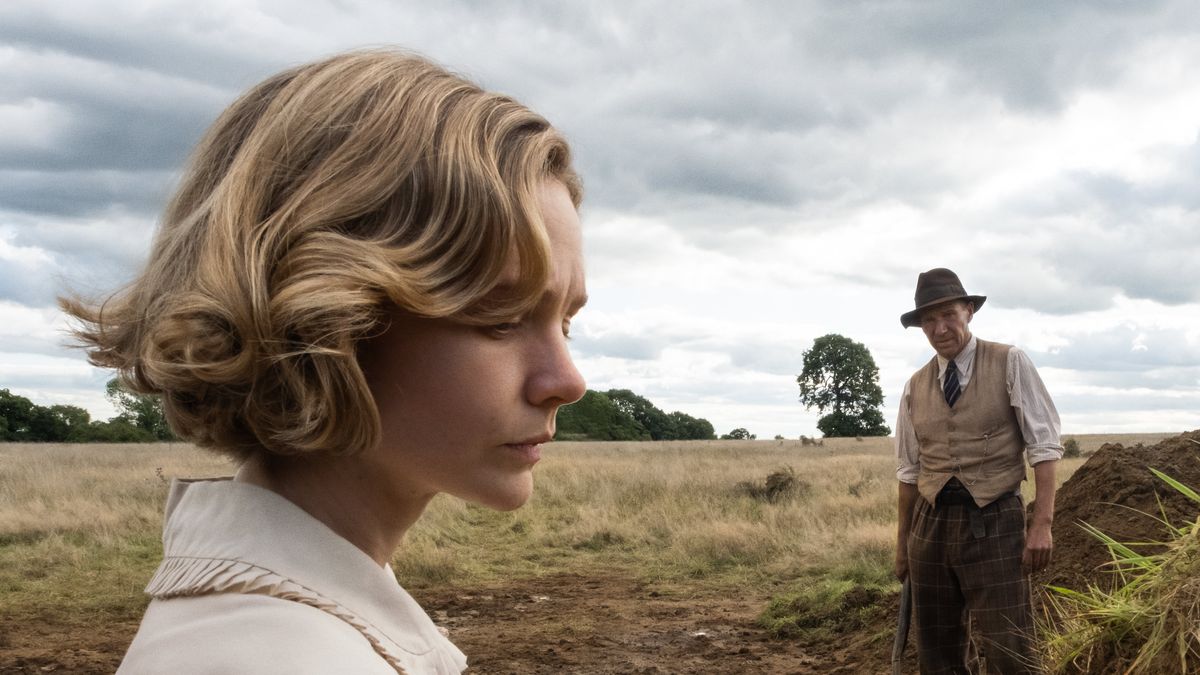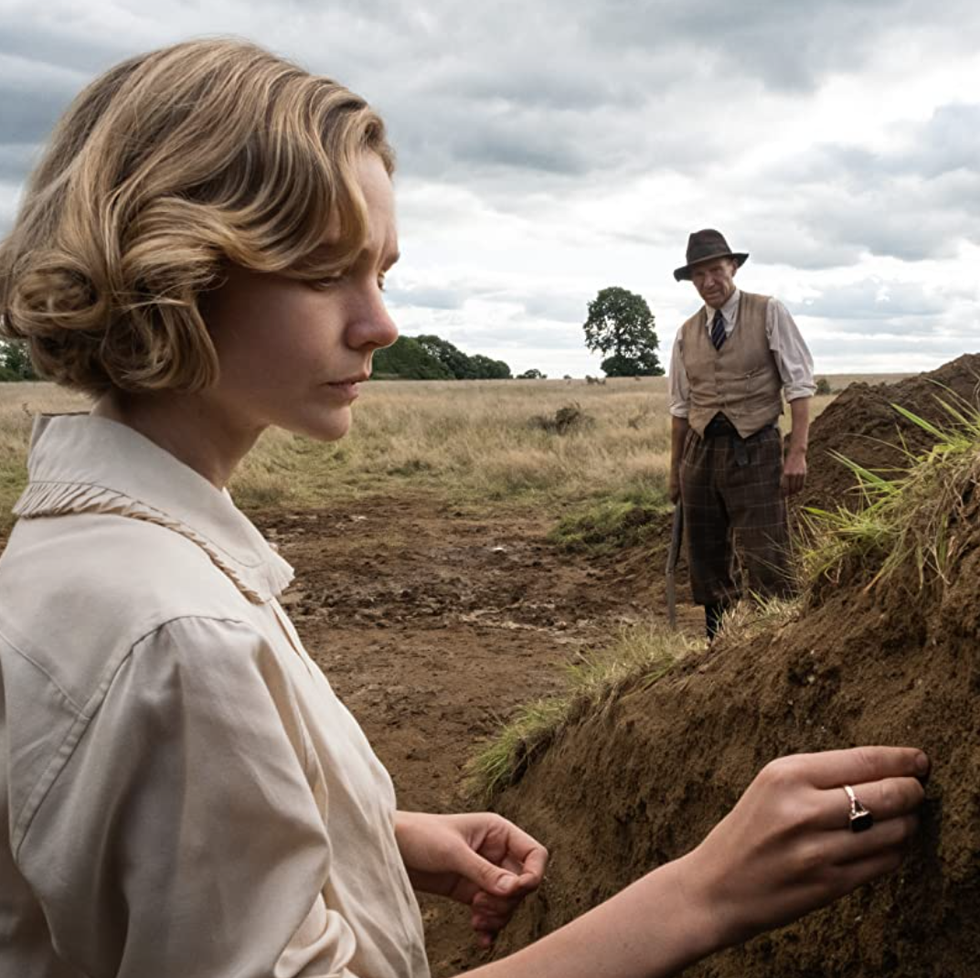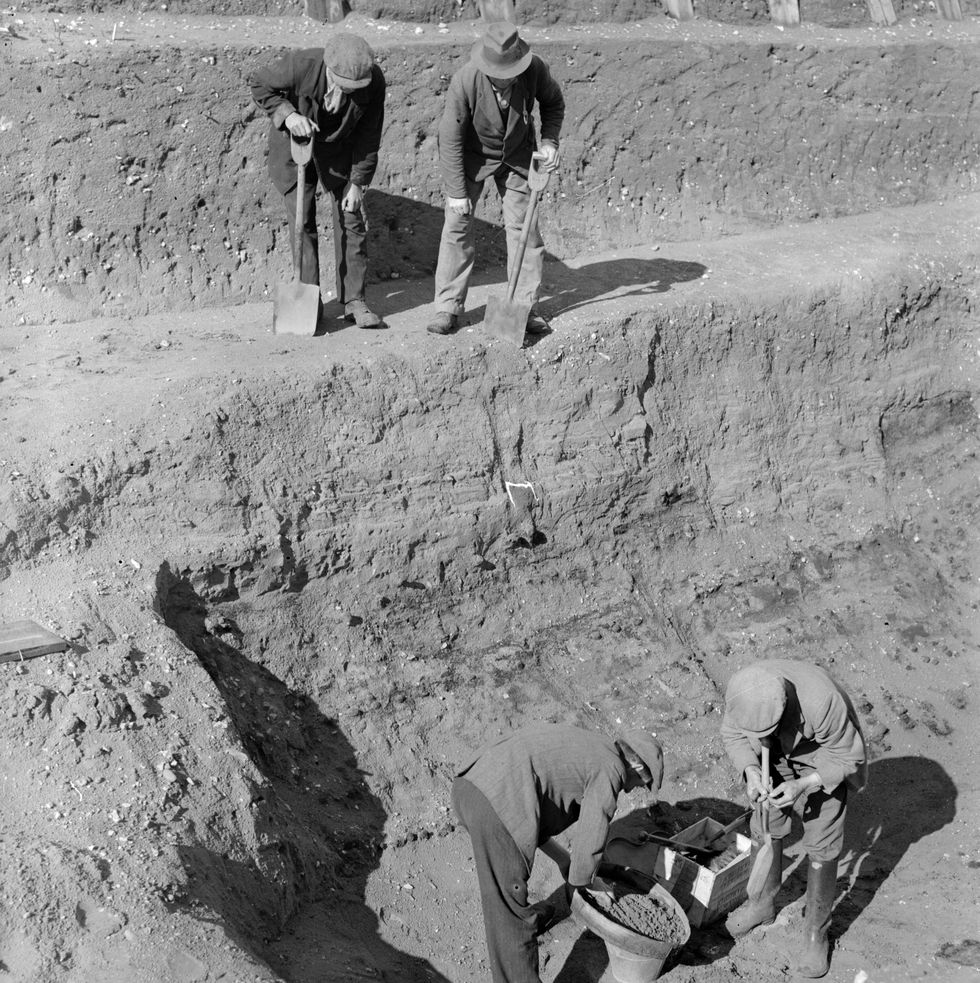Simon Stone’s The Dig, now on Netflix, starring Carrey Mulligan and Ralph Fiennes, began its source material excavation in 2006. Producer Ellie Wood had then finished John Preston’s historical novel, The Dig, a semi-fictional work (which, at the time, had yet to be released) expanding on the real 1939 archeological excavation at Sutton Hoo, Suffolk, England. She immediately wanted to turn the story into a film and soon sent the story to screenwriters.
What Wood saw was a trove of dramatic character relationships. She explained this insight to the BBC. “As the ship is revealed, so are the inner lives of the people involved, and that’s what seemed so powerful and original to me.” Wood wanted the film to further explore these hidden character tensions, the “simmering feelings kept in check by British reserve and the class structure.”
Years later, after reportedly cycling through actors including Cate Blanchett and then Nicole Kidman, The Dig found its star in Carey Mulligan, who plays Edith Pretty. But how much of Pretty’s story is true? What happened at Sutton Hoo and was it really as dramatic as the Netflix drama?
The Dig tells a semi-fictional story of the Sutton Hoo Excavation.
John Preston began work on the novel after discovering that his aunt, Peggy Piggot, had been involved with the Sutton Hoo excavation. Rather than write a journalistic account of the event, Preston decided to instead expand the story, mining the history for fictional inspirations.
The underlying story of both Preston’s novel and the film, however, plays pretty close to fact. Newlyweds Frank and Edith Pretty purchased property in southeast England in 1926. After her husband’s death in 1934, Pretty began further exploring the property, which included mysterious mounds scattered throughout. In 1937, Pretty decided to have the site excavated and reached out to a nearby museum. Archaeologist Basil Brown began excavation the following year, and then in 1939 made the history-book-altering discovery.
The mounds turned out to be the remains of a 1,400-year-old Anglo-Saxon burial site. At the site: an entire ship, 80 feet long, used as a burial vehicle.
Curator Sue Brunning of the British Museum, where the artifacts from Sutton Hoo are now housed, told National Geographic that the use of ships as burial devices were not historically uncommon. The Sutton Hoo ship, however, suggests an even grander scale. She goes on to explain:
“The very act of dragging a ship up from the river downhill, digging a hole big enough to contain the ship, and building the burial chamber, is almost like a piece of theater. We can imagine it involved huge groups of people. The funeral itself would have been an enormous occasion, and the [barrow] was so enormous, it could probably be seen from the river below when people sailed by.”
Brown’s excavations yielded 263 objects from the ship, including valuables, armor, tools, and weapons. The objects intimated a rich Anglo-Saxon culture, which, at the time of its discovery, greatly enhanced historians' limited knowledge of so called “Dark Ages” Europe.
The Dig fictionalizes some character relationships.
The only entirely fictional character in The Dig is Rory (Johnny Flynn). His relationship with Piggot, therefore, veers into historical drama—fiction that includes but diverges from historical facts.
Other events like the dramatic cave in are also fictionalized. But the character of Basil Brown needs no fictionalized drama.
Basil Brown only recently got his due.
Brown (played in The Dig by Ralph Fiennes) was self-taught archeologist. A Suffolk resident, Brown left school at the age of 12. He later found work at the local Ipswich Museum. When approached by Pretty, the museum recommended Brown for the excavation.
After the excavation, however, Brown’s name was not cited alongside the found artifacts. Shortly after the discovery of the ship, an archeologist from the Ministry of Works descended on Sutton Hoo and Brown’s role was slowly relegated. He wasn’t mentioned for years in the British Museum’s permanent collection.
Dig producer Ellie Wood told the BBC about another reason for bringing Brown’s story to life. “Due to class and intellectual snobbery, his invaluable work went unrecognized for so long, and I felt it was really important that more people should know what he achieved.”















